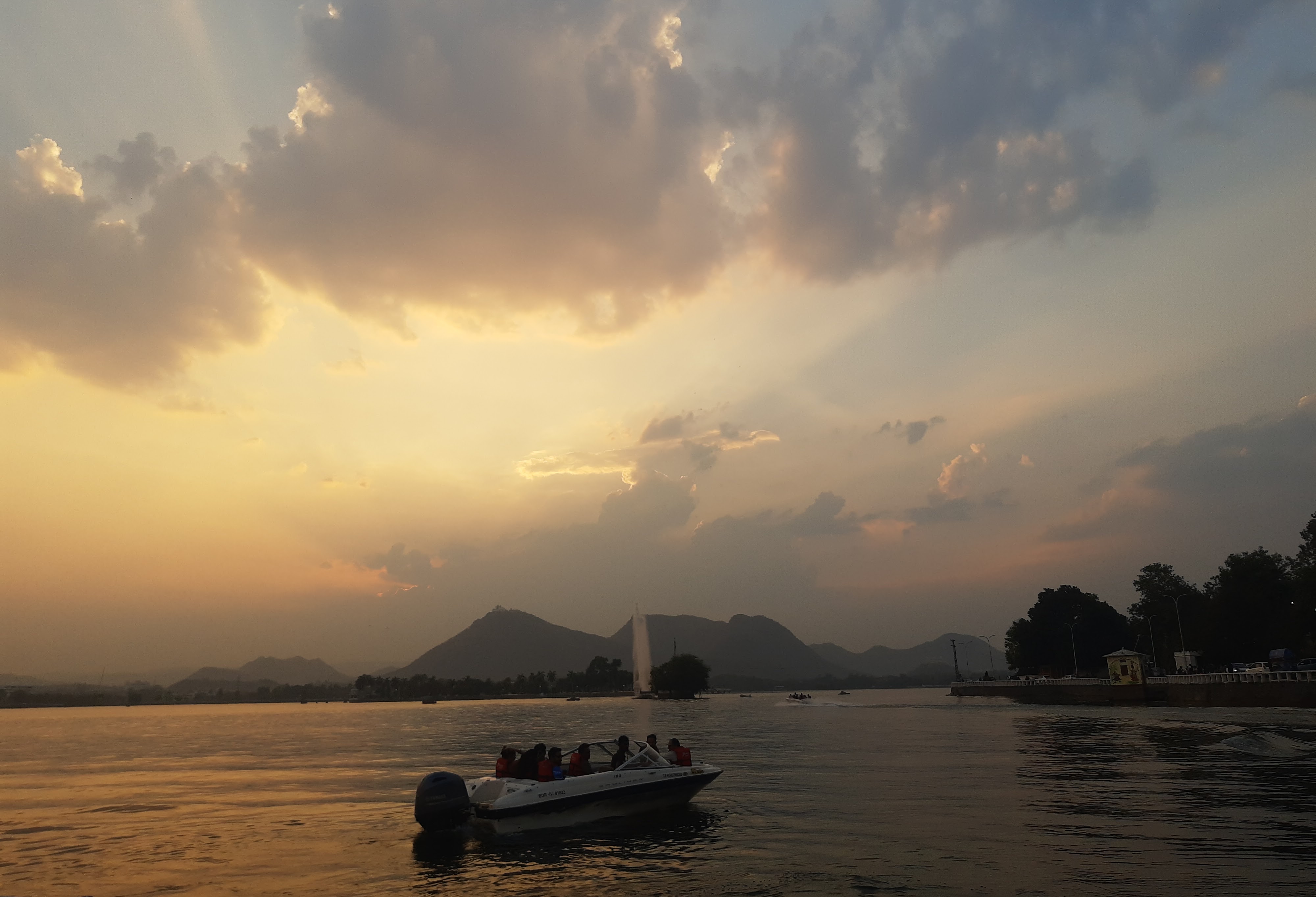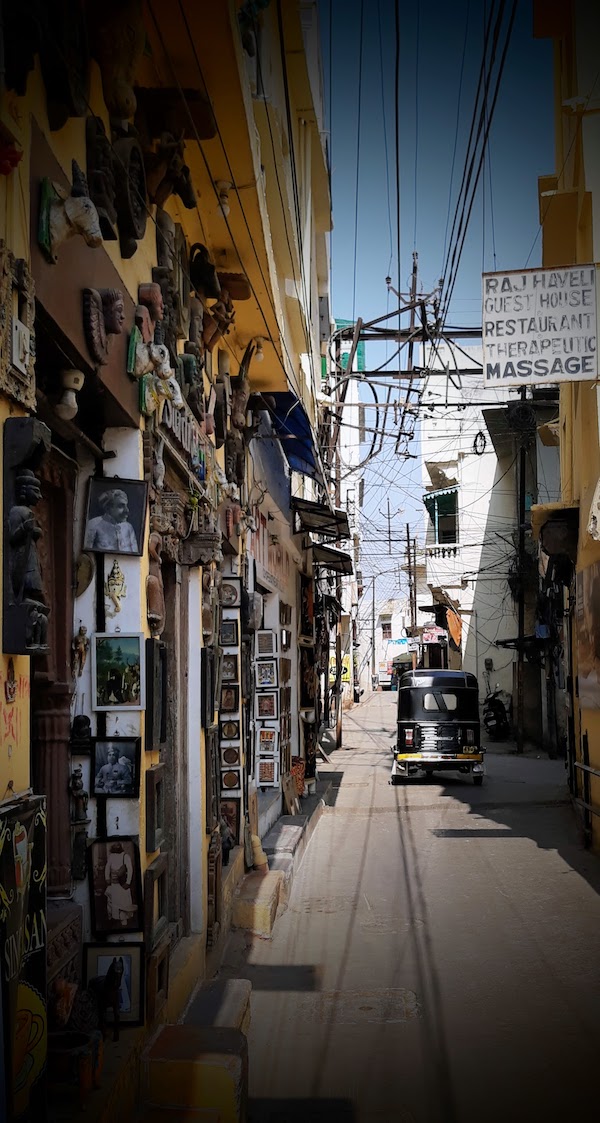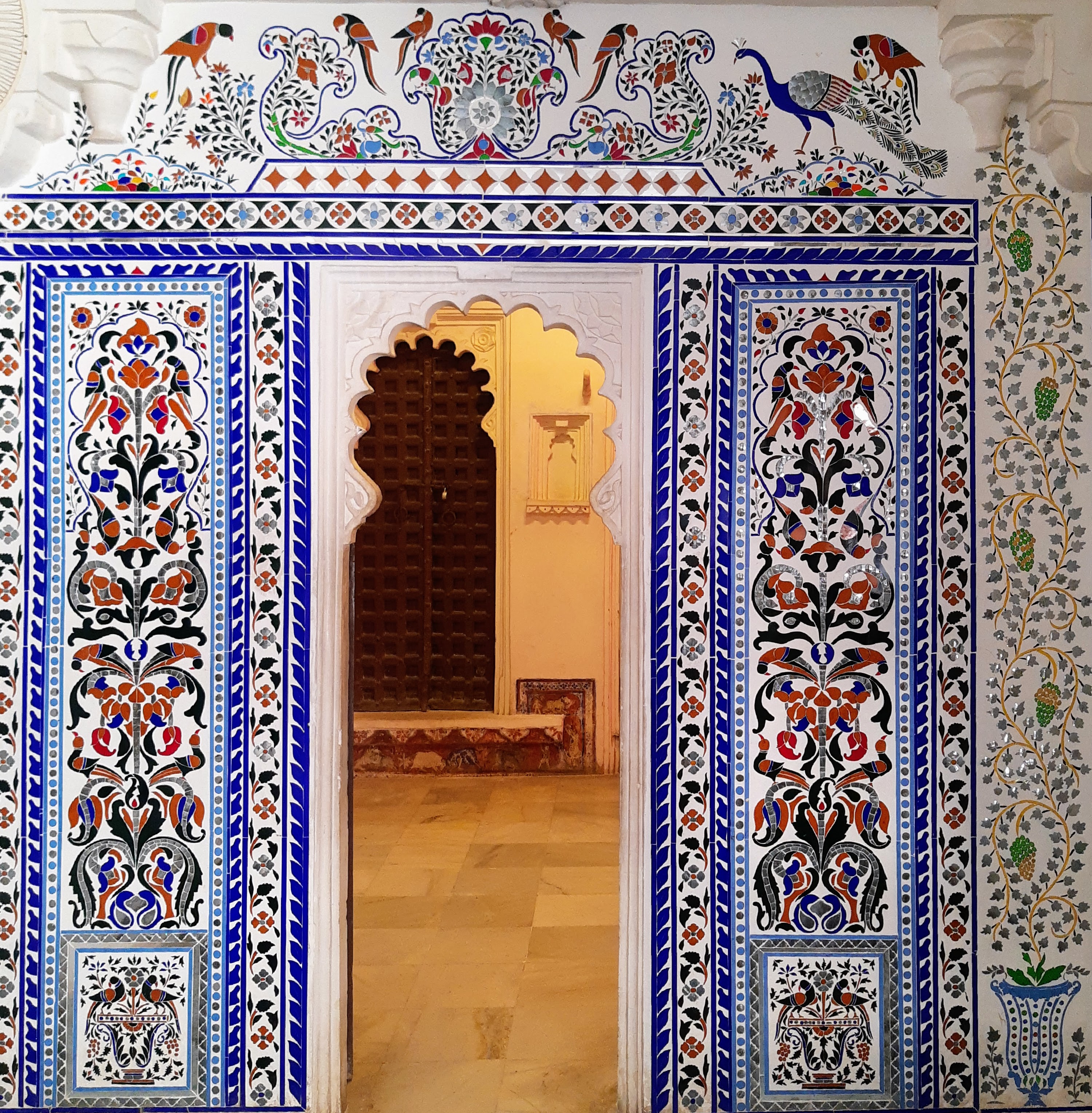Colours and Chaos
As I build out the mental layout for this piece of writing, I have different units of idea floating around, and I’m compelled to choose between two different styles; one of Pallavi Aiyar in Orienting and the other of Pico Iyer in A Beginner’s Guide to Japan, both that I’d read recently surrounding my trip to Japan and immensely loved. Both bring a lot of things about the culture and the country to the surface, one in a more investigative and analytical way, and the other more subtle and poetic.
Why am I rambling on the meta here I know not, so let me hop on to that boat waiting to take me back on the nostalgia ride to Udaipur.
 Boat rides we wanted to do, on the multiple lake vistas each with its own backdrops and scapes, but spontaneity not being conducive to experiences that happen only at certain timings, we suddenly caught ourselves speed-boating into the sunset at the Fateh Sagar lake. Screaming into the finite void of the lake over the rumble of a motor (which also decided to almost die on us mid-lake, but survived until we got to the bank, talk about over-using a machine), while struggling to absorb and hold into the memory, the orange hues criss-crossing into the ripples left behind and sparkling all around reflecting the numerous hills surrounding the city, and the infinitude of activity in the beautifully planned out public space around the lake.
Boat rides we wanted to do, on the multiple lake vistas each with its own backdrops and scapes, but spontaneity not being conducive to experiences that happen only at certain timings, we suddenly caught ourselves speed-boating into the sunset at the Fateh Sagar lake. Screaming into the finite void of the lake over the rumble of a motor (which also decided to almost die on us mid-lake, but survived until we got to the bank, talk about over-using a machine), while struggling to absorb and hold into the memory, the orange hues criss-crossing into the ripples left behind and sparkling all around reflecting the numerous hills surrounding the city, and the infinitude of activity in the beautifully planned out public space around the lake.
As a proponent of well-constructed functional public spaces, I was so impressed with the clean and well laid-out hangout spots around the lake, calming and stimulating at the same time, with not only its own buzzing economic activity, but also encouraging numerous hobbies for everyone with no gate-keeping.
 Once in a while you go on a walk in a lane full of noises, to catch only the moving sights, but shutting out the sounds with noise-cancelling technology. Smiling at those vivid bougainvillea shoots bending towards and nodding at you, while a cat’s eyes twinkle and cautiously follow you from a wall and a group of people nearby pamper a baby; effectively drowning out the honking vehicles and rumble of engines.
Once in a while you go on a walk in a lane full of noises, to catch only the moving sights, but shutting out the sounds with noise-cancelling technology. Smiling at those vivid bougainvillea shoots bending towards and nodding at you, while a cat’s eyes twinkle and cautiously follow you from a wall and a group of people nearby pamper a baby; effectively drowning out the honking vehicles and rumble of engines.
But I digress, for this is not how walking down the Jagdish Mandir lane was, because you could not shut out the noises around and expect to leave without a scratch. Lanes large enough to fit only an auto-rickshaw, with traffic jams every time two people walked on either side of the lane in addition, having to weave in and out of folks adorning the local colours and fabric, while trying to take stock of everything being sold on either side of the street. Shops overflowing on to the narrow lanes selling pretty and colourful goods, all hand-made by local artisans with vivid aesthetic tastes. Camel leather bags, wallets, leather-bound notebooks, bright fabric-bound notebooks, vivid patterned tiles, quirky prints on shirts, silver jhumkas, wooden figurines, wrought-iron figurines, miniature paintings large and small framed and unframed, interspersed here and there by kullad chai, mango lassis, kullad rabdi and kachoris, not to mention the honking and chatter. What an overpowering delight for the senses!
 The sky line is dotted with numerous palaces, and competing with them are the new tall buildings each with its own share of the Mewari-inspired arches and balustrades posing a puzzle to identify if it is a heritage building or not. So very curious to know how different royal dynasties had developed their own unique aesthetic styles, ensured there were adequate artisans carrying it over geographies and handing it over time.
The sky line is dotted with numerous palaces, and competing with them are the new tall buildings each with its own share of the Mewari-inspired arches and balustrades posing a puzzle to identify if it is a heritage building or not. So very curious to know how different royal dynasties had developed their own unique aesthetic styles, ensured there were adequate artisans carrying it over geographies and handing it over time.
Equally curious to understand how economies circled around the royal families, with their massively massive palaces, each adorned so tastefully with artwork. In ages where every output of the mind had to be manually executed patiently with attention to craft and with reliance on a minimal set of tools, it’s quite incredible that there was so much abundance that beauty was prioritised that it had created its own economy. When we think about artisan livelihood in the current era and try to preserve these skills acquired in the yesteryears, and hoping that the concentrated wealth from the royal households has flowed into different tiers of the society (wishful thinking I know), is it because the common man is still struggling for survival that we don’t see beauty getting the attention it used to. True that aesthetic norms change with globalisation, so perhaps attention to the old artistic styles are also cyclic.
I’m still trying to make sense of the incident where I was shown two beautiful handmade lacquer boxes painted with a vivid red, depicting soldiers in the Mewari style, each with a different price only because of how polished the end result and how precise the strokes were. And, I couldn’t bring myself to pay that cost even though I was completely captivated by that piece of art, without justifying to myself that it had some functional value. Are people who grow up in developing economies majorly utilitarian? (Also, a voice from somewhere in the mind saying, if this was Japan, this disparity wouldn’t exist and every work would have the same level of precision.)
 The absolutely mouth-watering street food that Delhi has to offer apparently came into being when the Mughal royal cooks had to find alternative livelihoods after the end of the Mughal era. The roads around Pichola very much reminded me of the same story, and I can’t but ignore this common thread across cities with historical significances. As much as the royal households accumulated wealth depriving the common man of better lives, and the common theme being civil revolutions or land reforms to distribute this wealth throughout history across geographies, the major contributions of the royals seem to be that of culture and identity.
The absolutely mouth-watering street food that Delhi has to offer apparently came into being when the Mughal royal cooks had to find alternative livelihoods after the end of the Mughal era. The roads around Pichola very much reminded me of the same story, and I can’t but ignore this common thread across cities with historical significances. As much as the royal households accumulated wealth depriving the common man of better lives, and the common theme being civil revolutions or land reforms to distribute this wealth throughout history across geographies, the major contributions of the royals seem to be that of culture and identity.
Along with all the memories and thought bubbles, I’ve managed to bring over some of this beauty into my home, in the form of home decor and stationery, like most of the other things at home that are reminders of going out into the world and picking to build some more.
 Surely I’m naively downplaying the contributions, who could argue against the engineering wonders and the long-term thinking of building multiple lakes and connecting them all in a desert? The City of Lakes is truly a marvel, and as a friend exclaimed how the ancestors have been more talented and geniuses in getting large-scale projects like this done, I couldn’t but argue that we haven’t really stagnated in intelligence(seeing as intelligence only compounds through evolution and just by more information being available to build upon), but we’ve hit roadblocks of systemic complexity of multiple layers of political webs to wade through to get consensus in executing anything of sufficient impact and complexity.
Surely I’m naively downplaying the contributions, who could argue against the engineering wonders and the long-term thinking of building multiple lakes and connecting them all in a desert? The City of Lakes is truly a marvel, and as a friend exclaimed how the ancestors have been more talented and geniuses in getting large-scale projects like this done, I couldn’t but argue that we haven’t really stagnated in intelligence(seeing as intelligence only compounds through evolution and just by more information being available to build upon), but we’ve hit roadblocks of systemic complexity of multiple layers of political webs to wade through to get consensus in executing anything of sufficient impact and complexity.
Well, I seem to have accidentally drifted off course from the fictional creative to the analytical mood of pondering over the important problems of humanity and wondering “Where is my Flying Car?”, so I’ll end thus feeling inspired enough from the trip to go and try to build in the real world.